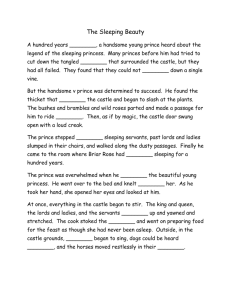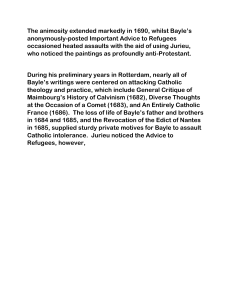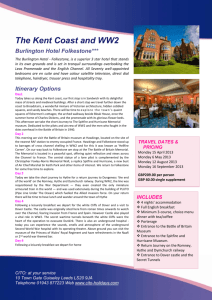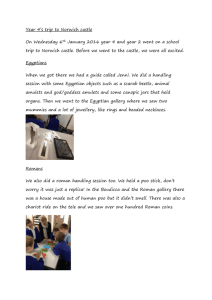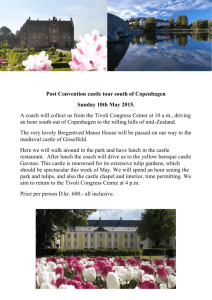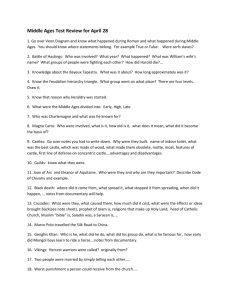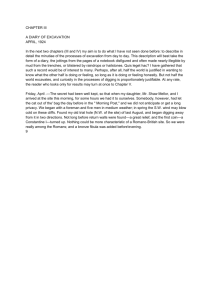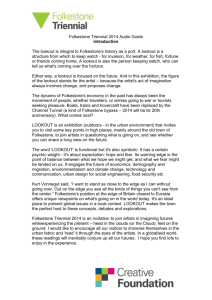Medieval Folkestone
advertisement
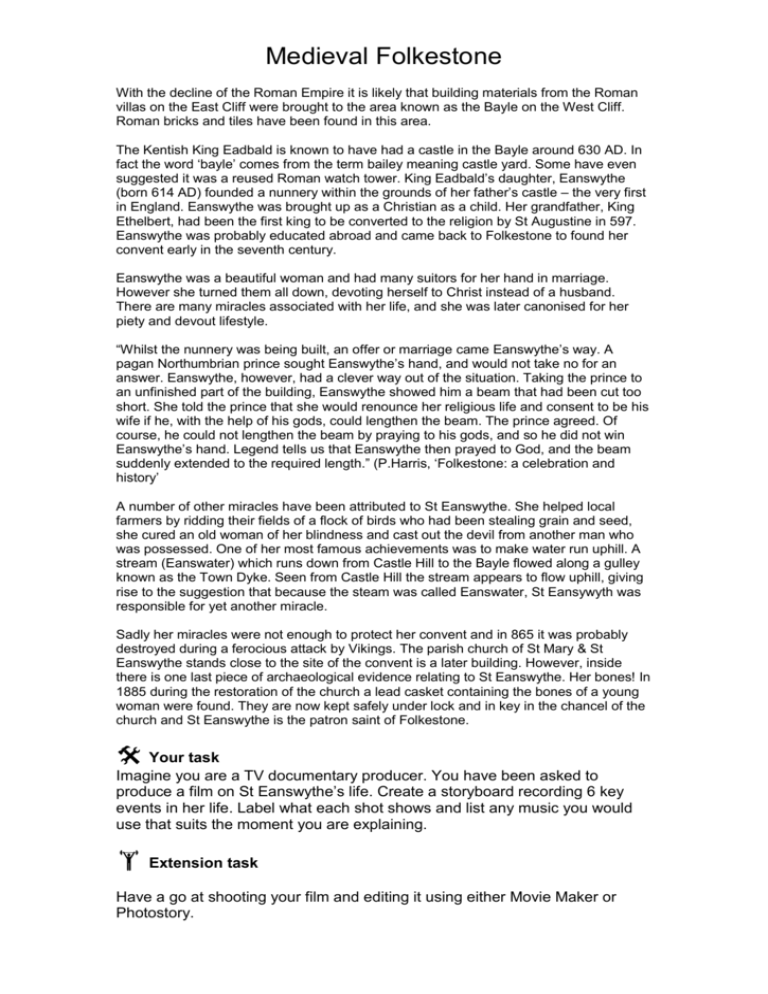
Medieval Folkestone With the decline of the Roman Empire it is likely that building materials from the Roman villas on the East Cliff were brought to the area known as the Bayle on the West Cliff. Roman bricks and tiles have been found in this area. The Kentish King Eadbald is known to have had a castle in the Bayle around 630 AD. In fact the word ‘bayle’ comes from the term bailey meaning castle yard. Some have even suggested it was a reused Roman watch tower. King Eadbald’s daughter, Eanswythe (born 614 AD) founded a nunnery within the grounds of her father’s castle – the very first in England. Eanswythe was brought up as a Christian as a child. Her grandfather, King Ethelbert, had been the first king to be converted to the religion by St Augustine in 597. Eanswythe was probably educated abroad and came back to Folkestone to found her convent early in the seventh century. Eanswythe was a beautiful woman and had many suitors for her hand in marriage. However she turned them all down, devoting herself to Christ instead of a husband. There are many miracles associated with her life, and she was later canonised for her piety and devout lifestyle. “Whilst the nunnery was being built, an offer or marriage came Eanswythe’s way. A pagan Northumbrian prince sought Eanswythe’s hand, and would not take no for an answer. Eanswythe, however, had a clever way out of the situation. Taking the prince to an unfinished part of the building, Eanswythe showed him a beam that had been cut too short. She told the prince that she would renounce her religious life and consent to be his wife if he, with the help of his gods, could lengthen the beam. The prince agreed. Of course, he could not lengthen the beam by praying to his gods, and so he did not win Eanswythe’s hand. Legend tells us that Eanswythe then prayed to God, and the beam suddenly extended to the required length.” (P.Harris, ‘Folkestone: a celebration and history’ A number of other miracles have been attributed to St Eanswythe. She helped local farmers by ridding their fields of a flock of birds who had been stealing grain and seed, she cured an old woman of her blindness and cast out the devil from another man who was possessed. One of her most famous achievements was to make water run uphill. A stream (Eanswater) which runs down from Castle Hill to the Bayle flowed along a gulley known as the Town Dyke. Seen from Castle Hill the stream appears to flow uphill, giving rise to the suggestion that because the steam was called Eanswater, St Eansywyth was responsible for yet another miracle. Sadly her miracles were not enough to protect her convent and in 865 it was probably destroyed during a ferocious attack by Vikings. The parish church of St Mary & St Eanswythe stands close to the site of the convent is a later building. However, inside there is one last piece of archaeological evidence relating to St Eanswythe. Her bones! In 1885 during the restoration of the church a lead casket containing the bones of a young woman were found. They are now kept safely under lock and in key in the chancel of the church and St Eanswythe is the patron saint of Folkestone. Your task Imagine you are a TV documentary producer. You have been asked to produce a film on St Eanswythe’s life. Create a storyboard recording 6 key events in her life. Label what each shot shows and list any music you would use that suits the moment you are explaining. Extension task Have a go at shooting your film and editing it using either Movie Maker or Photostory.

